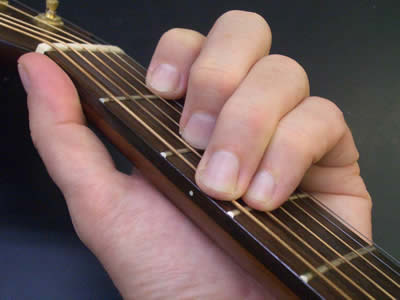Music Education
Notes On Using Chords
| Share page | Visit Us On FB |

Chords are combinations of two or more notes. Chords consist of a series of intervals e.g. C E G Basic harmonies / chords are called triads. Chords fill out the sound, add colour and give a feeling to the music. For instance major chords are often bright and happy whilst minor chords are sad and mournful.
Chords can be played in the background behind the lead instruments and they can give space before the main tune comes swirling in again. All instruments can play chords and they allow musicians to ‘vamp' during sessions. Orchestras use them to great effect.
1) Single note instruments e.g. Flute, whistle, clarinet can play broken chords (arpeggio) that is the notes of the chord in rapid succession.
To produce basic chords use the following chart.
| Major | Root | 3rd | 5th | Minor | Root | 3rd | 5th | ||
| G | = | G | B | D | Em | = | E | 0 | B |
| D | = | D | F# | A | Am | = | A | C | E |
| C | = | C | E | G | Bm | = | B | D | F# |
| A | = | A | C# | E |
To add a seventh
| G7 | = | G | B | D | F |
| D7 | = | D | F# | A | C |
They can be played up and down the octaves but are often at first kept to the lower part of the instrument -so as not to deract from the main tune.
2) Guitars, Banjos, mandolins have chord charts. Up the neck chords are very useful for effects such as slides and damping off. Runs between chords can heighten the tension and add interest. (chart available for some)
3) Violins have two-note chord charts for low and high positions. Low chords are useful at first so as not to detract from the main tune. (chart available)
4) Accordions (both piano and button) have a variety of chords already provided. Those that are missing can sometimes be found on the other side. Accordionists need to take great care not to over use chords when playing with other less powerful instruments. The various concertinas do have their own chord charts. (extra notes for button accordion)
5) Percussion can play chords by combining various percussion instruments. Even the triangle can be tuned!
Diad Chords
Diad chords are very useful in folk music and are
shown as ![]() etc. They are two note chords that lack the third note of the scale.
This means they are neither major or minor but modal.
etc. They are two note chords that lack the third note of the scale.
This means they are neither major or minor but modal.
For example in the D major chord (D F# A) the F# can be removed. The chord will be made up of D and A, the 1st and 5th
Be careful too many diad chords, in a tune, can drain the colour from it. A skilful use of triads, diads and sevenths will make the music interesting.